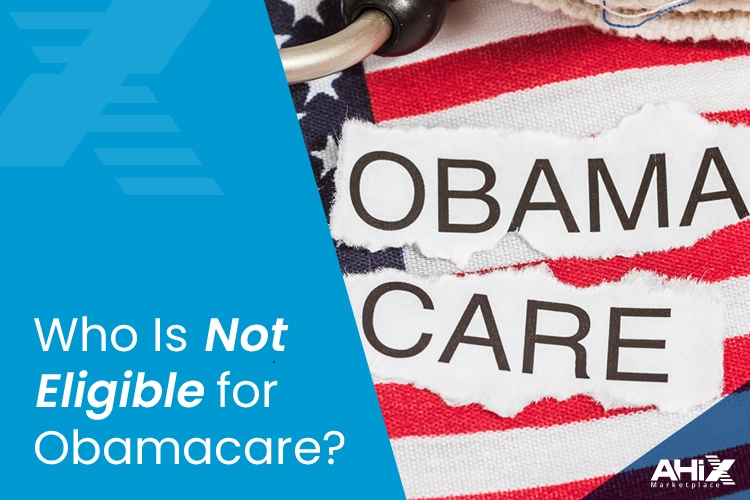Finding health insurance for kids can be challenging, but it’s essential to ensure they receive the best care. This guide covers everything you need to know about different health insurance options for children, helping you choose the right plan and secure their health and well-being.
Key Takeaways
- Health insurance is essential for children as it provides access to timely medical care, preventive services, and mental health support, reducing financial stress for families.
- When choosing a health insurance plan for children, key features to consider include affordability, coverage of vision and dental services, access to pediatric specialists, and understanding out-of-pocket costs.
- Families can choose from Medicaid, CHIP, private insurance, or Marketplace plans to secure health coverage for their children, with options tailored to different financial situations and healthcare needs.
Why Is Health Insurance Important for Kids?

Health insurance is pivotal for children to receive timely and adequate medical care. Coverage ensures children get timely vaccinations, preventing diseases and maintaining overall health. Regular checkups and preventive services, often covered under health insurance plans, aid in early detection and treatment of potential health issues, keeping kids healthy and active. Parents gain peace of mind knowing their child is protected against common illnesses and developmental issues.
Health insurance grants access to essential benefits like mental health support and pediatric care, crucial for the holistic development of children. Such comprehensive coverage reduces stress and financial burdens on families, allowing parents to focus on nurturing their children without worrying about medical expenses.
During accidents or emergencies, health insurance ensures children receive immediate and appropriate medical care without the added worry of high out-of-pocket expenses. Knowing your child is covered for emergency services offers immense relief and allows swift, confident action in critical situations.
Health insurance is not just a safety net; it is a proactive measure to keep your child healthy and safe.
Key Features to Look for in a Child’s Health Insurance Plan
When it comes to choosing the right health insurance plan for your child, several key features must be taken into account:
- Affordability and comprehensive coverage are crucial factors.
- Balancing cost and coverage ensures your child’s healthcare needs are met without straining the family budget.
- Consider plans that offer coverage for vision, dental, and hearing services, as these are often necessary for a child’s overall health.
Thoroughly reading health plan documentation helps understand the coverage options and any limitations. Each health plan varies, and understanding these nuances aids in choosing the best fit for your family. Some plans may have a robust network of in-network providers, significantly reducing out-of-pocket costs compared to out-of-network providers. Assessing the pros and cons of the health plan’s network is a necessary step.
Access to pediatric specialists is another key feature to consider. For children with specific health needs, making sure the plan covers visits to pediatric specialists is crucial. Quality of care and access to specialists can vary significantly between public and private insurance plans, so evaluating these aspects carefully is important.
Also, evaluate the annual maximum out-of-pocket costs to understand the potential financial impact of your plan choice. These costs can include deductibles, copayments, and coinsurance, which can add up quickly.
After the birth of a child, parents should compare premium costs, and coverage of doctors, hospitals, and medications. An informed decision requires a thorough comparison of all these factors to ensure your child receives the best possible care.
Types of Health Insurance Plans Available for Children
There are several options available when it comes to health insurance for children, including Medicaid, the Children’s Health Insurance Program (CHIP), private insurers, and plans available through the Health Insurance Marketplace. Each type of plan has its own set of benefits and limitations, and understanding these can help you choose the best option for your child.
Let’s explore these options in detail.
Medicaid and CHIP Program
Medicaid and the Children’s Health Insurance Program (CHIP) are invaluable resources for families seeking affordable health coverage for their children. These programs offer free or low-cost health coverage based on family income and state regulations. Medicaid serves families with very low incomes, while CHIP caters to those who do not qualify for Medicaid but still require affordable healthcare options. Together, these programs ensure all children, regardless of their family’s financial situation, have access to essential medical care.
One of the significant advantages of Medicaid and CHIP is their comprehensive coverage, which includes essential health benefits such as dental and vision services. These benefits are crucial for a child’s overall health and development. Additionally, the costs associated with Medicaid services, such as deductibles and copays, are typically minimal, making it a very affordable option for eligible families.
Medicaid services can vary by state, so checking local regulations and coverage details is important. In some states, Medicaid coverage can start within 90 days, providing faster access to healthcare for newborns and children. Once enrolled, a newborn will stay on Medicaid for at least a year after birth, ensuring continuous coverage during the critical early stages of life.
CHIP also ensures dental insurance for children is covered as an essential health benefit under the Affordable Care Act. This means that parents can rest assured that their children will receive necessary dental care, which is vital for their overall health.
Given the affordability and comprehensive coverage offered by Medicaid and CHIP, these programs are excellent options for families seeking low-cost health insurance for their children.
Private Health Insurance Plans
Private health insurance plans provide another avenue for securing health coverage for children. These plans, offered by various insurance companies, specifically focus on covering kids. One main benefit of private insurance is it offers more flexibility and choice compared to public options. However, this flexibility often comes at a higher cost, with potentially higher premiums and out-of-pocket expenses.
Short-term health insurance is another option, though it tends to offer limited coverage and does not cover pre-existing conditions. Enrollment in private child-only health insurance plans usually occurs during open enrollment periods or special enrollment periods triggered by qualifying life events.
Thoroughly reading all plan documentation is crucial to understanding what is covered and any associated costs. Short-term plans can be a temporary solution, generally best for those needing limited-duration coverage.
Marketplace Health Insurance Plans
The Health Insurance Marketplace allows families to compare different health insurance plans and access government financial assistance to cover costs. This platform benefits families who do not qualify for Medicaid but still need affordable health coverage. CHIP also offers affordable health coverage for families with incomes above Medicaid limits, bridging the gap for those who might struggle to find suitable insurance.
Marketplace plans often include essential health benefits, making them a comprehensive option for children’s health insurance. By comparing multiple plans, parents can find one that fits their needs and budget while ensuring their child receives necessary medical care under a guardian’s plan.
Using the Marketplace can also provide access to financial assistance, reducing the cost of premiums and out-of-pocket expenses based on income.
[see_plans]Steps to Enroll Your Child in a Health Insurance Plan

Enrolling your child in a health insurance plan can seem daunting, but breaking down the process into manageable steps can simplify it. First, gather all necessary documentation, including proof of identity, citizenship, and income. Proof of income can be provided through recent pay stubs or tax returns, and confirming your home address with documents dated within the last six months is also required. Proof of your child’s identity, such as their birth certificate or Social Security card, is also crucial.
After gathering all necessary documents, apply during the open enrollment period or a special enrollment period if you qualify due to a life event. Applications during special enrollment periods require additional paperwork to verify eligibility, so be prepared to provide these documents.
Finally, contact the health insurance company directly to enroll your baby in a health insurance plan. When applying for coverage, you may also need to provide proof of current insurance status. Following these steps ensures your child is enrolled in a suitable health insurance plan that meets their needs.
Cost Considerations for Child-Only Health Insurance
Cost is a crucial factor when choosing a health insurance plan for your children. Out-of-pocket expenses can include premiums, deductibles, and copayments, varying widely depending on the plan. Health insurance prices for children can fluctuate based on their age, geographic location, and whether they are included in a parent’s policy. For example, adding a child to an existing adult health insurance plan typically incurs a flat monthly fee until the child reaches 14, after which premiums may increase each year.
Comparing out-of-pocket expenses and additional services covered by different plans is crucial, as these can greatly affect the overall affordability of healthcare for children. Some insurance companies allow families to pay higher premiums for more comprehensive benefits for children, offering a trade-off between cost and coverage.
Parents may also qualify for financial assistance when enrolling their children in Marketplace plans, further reducing the financial burden.
Additional Coverage: Dental and Vision Insurance
Dental and vision insurance are critical components of a comprehensive health insurance plan for children. These coverages ensure children receive preventive care, early detection, and treatment of dental and vision health issues. Depending on the insurance provider’s offerings, children may receive dental coverage through their general health plan or a separate dental plan. Pediatricians typically recommend official dental visits when the first tooth erupts or by the age of 3 to 4 for preventive care.
Most health insurance plans for children cover annual eye exams up to age 19, with coverage for corrective lenses varying by plan. The first official eye exams for children usually occur around age 3, making timely vision care important.
Including dental and vision coverage in your child’s health insurance significantly contributes to their overall well-being.
How Long Can Your Child Stay on Your Health Insurance?
Under the Affordable Care Act, dependent coverage must be available until a child turns 26, regardless of their student status or living situation. This means children can remain on their parent’s health plan until the end of the calendar year in which they turn 26. Both married and unmarried children qualify for health insurance coverage under their parents’ plans until they reach the age limit.
As children approach the coverage age limit, planning for their transition to their own health insurance plans is important to ensure continued coverage. Understanding this timeline helps parents prepare for future financial and medical planning, ensuring their children remain covered during this critical transition period.
Researching and Comparing Health Insurance Plans

Researching and comparing health insurance plans is essential for finding the best coverage for your child. Health insurance significantly increases children’s access to routine medical care, improving their chances for early diagnosis and treatment of health issues. Health insurance can also reduce the frequency of emergency room visits among children by ensuring they receive regular health care. Insured children are less likely to face delays in receiving medical care, even for serious conditions.
Using online tools and resources can help families effectively compare the features of various health insurance plans tailored for children. By researching and comparing plans, parents can find the most suitable and cost-effective options that provide comprehensive coverage for their children’s healthcare needs.
Summary
Securing the best health insurance for your child is a critical step in ensuring their overall health and well-being. By understanding the essential reasons for having health insurance, recognizing the key features to look for in a plan, and being aware of the various types of health insurance available, parents can make informed decisions. From public options like Medicaid and CHIP to private and marketplace plans, each has its own set of benefits and considerations.
As parents, it’s important to meticulously research and compare different plans, considering factors such as cost, coverage, and access to specialists. Don’t forget the significance of additional coverages like dental and vision insurance, and be mindful of how long your child can remain on your plan. By following the steps to enroll and being aware of cost considerations, you can ensure that your child receives the best possible healthcare. We hope this guide has provided you with valuable insights and confidence to navigate the complexities of children’s health insurance.
[see_plans]Frequently Asked Questions
1. What is the most affordable health insurance for kids?
The most affordable health insurance options for children include Medicaid, CHIP (Children’s Health Insurance Program), and subsidized Marketplace plans. Medicaid and CHIP offer low-cost or free coverage for eligible families, while Marketplace plans provide government subsidies to reduce costs. Private insurance can also be an option, but premiums are typically higher.
2. How can I find out if my child qualifies for Medicaid or CHIP?
Medicaid and CHIP eligibility is based on household income, family size, and state-specific rules. You can check eligibility through:
- Healthcare.gov (Federal Marketplace)
- Your state’s Medicaid office
- CHIP program websites
Many families who don’t qualify for Medicaid may still be eligible for CHIP, which covers children at low to moderate-income levels.
3. Can I buy health insurance only for my child?
Yes, you can purchase child-only health insurance through:
- Medicaid or CHIP (for low-income families)
- Marketplace plans (with subsidies based on income)
- Private insurance providers (for more flexibility, but higher costs)
Short-term health insurance is another option, but it does not cover pre-existing conditions and may have limited benefits.
4. What are the key benefits of health insurance for kids?
- A good child health insurance plan provides:
- Preventive care (vaccinations, annual checkups)
- Emergency services (hospital visits, urgent care)
- Specialist access (pediatricians, therapists, mental health care)
- Dental and vision coverage (offered in many child plans)
- Lower out-of-pocket costs for prescriptions, treatments, and hospital stays
5. Can I get tax credits for my child’s health insurance?
Yes! Families who purchase health insurance for their child through the Health Insurance Marketplace may qualify for:
- Premium Tax Credits (to lower monthly premiums)
- Cost-Sharing Reductions (for lower deductibles and copays)
These savings depend on household income and eligibility requirements.
6. How long can my child stay on my health insurance plan?
Under the Affordable Care Act (ACA), children can remain on their parent’s health insurance until age 26, regardless of their:
- Marital status
- Employment situation
- Living arrangement
For newborns and infants, parents must add them to their plan within 30-60 days of birth.
7. Do all health insurance plans for kids cover dental and vision?
No, but Medicaid, CHIP, and some private health plans include dental and vision coverage for children. If not included, parents may need to purchase a separate pediatric dental and vision plan.
8. What is the best private health insurance for children?
The best private health insurance for kids depends on:
- Budget (monthly premiums, deductibles, copays)
- Network size (access to pediatricians, hospitals)
- Coverage (dental, vision, emergency care)
Some of the best private health insurance companies for children include:
- Blue Cross Blue Shield
- UnitedHealthcare
- Cigna
- Aetna
Comparing plans on Healthcare.gov or directly through insurers’ websites can help find the best fit.
9. What happens if my child is uninsured?
Without health insurance, children may:
- Miss preventive care (vaccinations, screenings)
- Have limited access to specialists (pediatricians, mental health providers)
- Face high medical costs for doctor visits, prescriptions, or emergencies
If your child is uninsured, check if they qualify for Medicaid or CHIP, which offer free or low-cost coverage.
10. Can I switch my child’s health insurance plan anytime?
You can only switch health insurance plans for your child during:
- Open Enrollment (typically November to January)
- Special Enrollment Periods (triggered by qualifying life events, like birth, loss of coverage, or adoption)
Medicaid and CHIP allow enrollment year-round.



